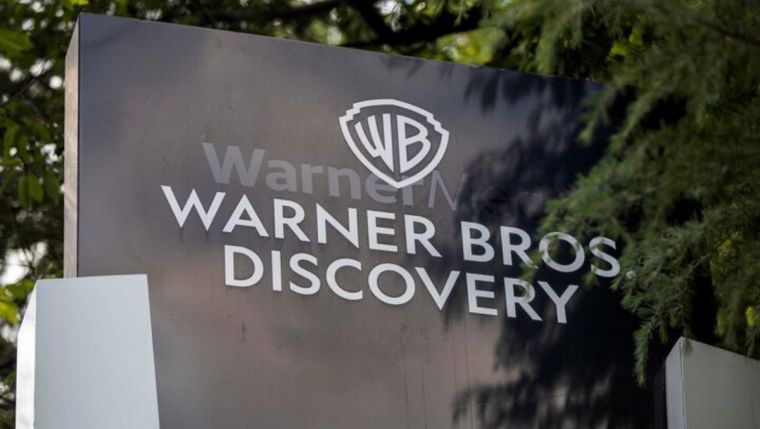Warner Bros. Discovery (WBD), the major U.S. media conglomerate that owns iconic brands such as HBO, Warner Bros. Pictures, CNN, and Discovery Channel, is reportedly considering a major strategic shake-up — including the possibility of selling the company or parts of it. The move follows its previously announced plan to split into two separate businesses.
A Major Strategic Review
According to people familiar with the matter, WBD has received multiple expressions of interest from global entertainment and technology companies seeking to acquire either its entire portfolio or individual divisions. CEO David Zaslav and the board are now conducting a comprehensive review of all strategic alternatives aimed at maximizing shareholder value.
The review comes alongside WBD’s ongoing plan to divide the conglomerate into two entities by mid-2026. One will focus on entertainment and streaming — including HBO, Warner Bros. Studio, and the Max streaming platform — while the other will concentrate on cable and international networks such as Discovery and TLC.
Global Buyers Circle the Brand
Several major players in the media and streaming sectors are reportedly assessing potential offers. Companies such as Paramount Skydance, Netflix, and Comcast are believed to be among those exploring opportunities to acquire parts of WBD’s assets. Paramount’s early proposal, valued at around $60 billion, was reportedly declined as WBD looks for a higher valuation or a more favorable structure.
Industry insiders note that Warner Bros.’ vast library, which includes franchises like Harry Potter, DC Universe, and Game of Thrones, makes it one of the most attractive assets in the entertainment world. Any potential sale would likely trigger a bidding war among global media giants seeking to strengthen their content libraries.
Why the Timing Matters
The review reflects the profound changes reshaping the entertainment industry. While streaming continues to grow, traditional television and cable viewership are shrinking rapidly. WBD’s leadership believes a breakup — or selective sale — could help unlock greater value for its shareholders by separating the fast-growing streaming and studio divisions from slower-growth legacy networks.
By considering a sale now, WBD is attempting to get ahead of an industry-wide consolidation wave. Streaming platforms are battling rising production costs, saturation, and profitability challenges, while legacy media companies face declining advertising revenue. The strategic review allows WBD to test the market for potential partners or buyers willing to pay premium valuations for its crown-jewel properties.
Market Response and Investor Outlook
The company’s stock surged following the announcement of the review, reflecting investor optimism about potential acquisition bids. Analysts view the move as a proactive attempt to reposition WBD before industry consolidation accelerates further.
However, concerns remain about how such a restructuring or sale might affect WBD’s workforce, ongoing productions, and key brands like CNN or TNT Sports. Some analysts caution that breaking up or selling core assets could lead to creative instability or cultural disruption within the company.
There are also regulatory challenges to consider. Any deal involving major players like Netflix or Comcast could attract close scrutiny from U.S. and European antitrust authorities, given the potential for reduced competition in the streaming and content markets.
Strategic Options on the Table
While WBD’s leadership has not committed to any particular path, several scenarios are under discussion:
- Full sale of the company: This would transfer both the entertainment and network arms to a single buyer — though such a deal would be complex and heavily scrutinized.
- Sale of individual assets: The company could sell off select divisions such as the Warner Bros. studio, HBO, or Discovery Networks while retaining control of others.
- Spin-off and merger model: Similar to past media deals, WBD could spin off one division and merge it with a strategic partner to boost scale and valuation.
- Internal split with strategic partnerships: If no satisfactory buyer emerges, WBD may proceed with the split as planned but pursue new global partnerships or joint ventures.
Industry Impact
If WBD proceeds with a sale, it would mark one of the biggest shake-ups in modern entertainment history. The company was formed just three years ago through the merger of WarnerMedia and Discovery, a deal that created one of the largest global content powerhouses.
Analysts say a breakup or acquisition could reshape Hollywood’s competitive balance, consolidating power among fewer mega-players and sparking fresh rounds of mergers across the media landscape. Smaller production houses and independent studios could face increased challenges accessing premium content distribution channels.
At the same time, the move could allow WBD’s streaming business to operate with greater agility and focus — crucial in a market increasingly defined by technology, data analytics, and direct-to-consumer relationships.
The Road Ahead
WBD has not set a fixed timeline for its review, and there is no certainty that any transaction will take place. The process could span months, as the company evaluates bids, regulatory hurdles, and strategic fit with potential partners.
Industry watchers expect more clarity by mid-2026, coinciding with the company’s planned separation. Until then, Warner Bros. Discovery stands at a crossroads: it can either evolve into a leaner, more agile entertainment enterprise or become part of a larger global conglomerate.
Whatever direction it takes, the outcome will likely redefine not only the future of Warner Bros. Discovery but also the broader entertainment industry — where content, technology, and scale increasingly decide who leads and who lags.




































